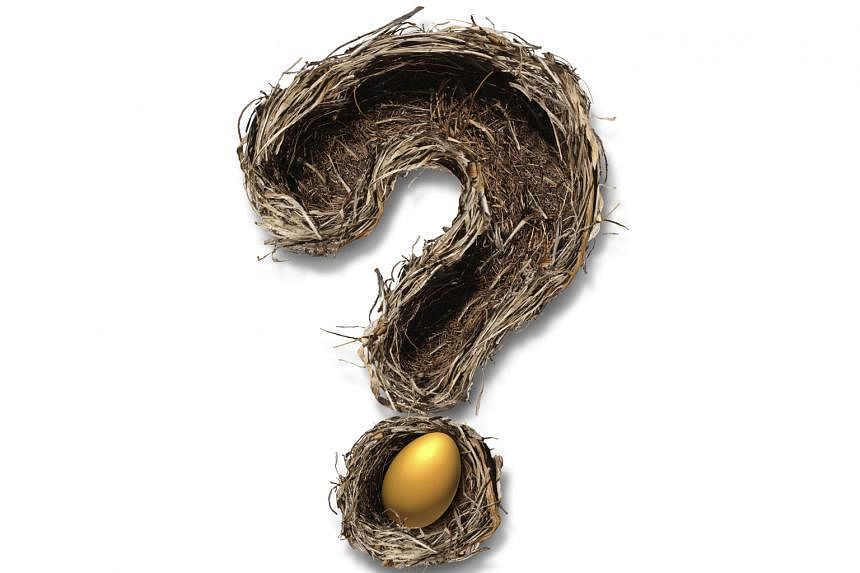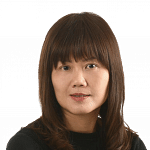As you approach retirement age, managing your money is more important than ever.
Your personal goals are likely to include two important priorities: preserving your wealth and maintaining your lifestyle.
A third is arguably even more vital - being financially protected if your health takes a turn for the worse in old age.
As you mull over the retirement financial equation, various questions will become critical.
For instance, what assets do you already have? Do you have alternative sources of income? When do you plan to retire? Are you thinking of downgrading from your current residence?
If you have yet to settle on a pathway to a comfortable retirement, you will probably be looking to invest in a solution that offers some growth, stability and low volatility, said Mr Dennis Khoo, head of personal financial services Singapore at United Overseas Bank.
Lower-risk investments
"Unit trusts are an option that offers both capital appreciation and a keen focus on downside risk management. They are also often well-diversified to mitigate unsystemic risk, which means the portfolio will hold up a lot better should there be a market correction," explained Mr Khoo.
"Another option is single blue-chip stocks. This strategy involves investing in stocks in established companies which operate in more mature and less volatile environments. Most of such stocks are defensive in nature, are less prone to extreme market movements and also pay good dividends."
With retirement looming large, the initial investment sum should be significantly larger. At the same time, investment risks should be minimised as you will not have time to recover from market corrections, he added.
Income distribution
Part of the problem with planning for retirement is that no one knows how long he will live.
But the undeniable fact is that Singaporeans today are expecting to live longer than ever.
Half of the people who are 65 today are set to live beyond 85, so many could face the grim prospect of their retirement savings running out halfway through retirement.
The mainstay of many investors in Singapore - property - is often seen as a way to help generate regular income for retirement.
However, OCBC Bank's head of wealth advisory Gregory Choy urged investors to bear in mind that the property market is subject to regulatory changes, which in turn can affect both the value and rental income of the property.
That means it is difficult to predict accurately the level of rental income, so it is challenging to depend on this income source alone during retirement, said Mr Choy.
Should a retiree who owns a Housing Board flat and a condominium unit sell one of them upon retirement and use the proceeds to generate a steady income?
While other investment instruments might offer a higher return on the retiree's funds over rental income, the retiree needs to recognise the risks involved in investing these funds, said Mr Choy.
It is therefore important to structure your retirement investments in a way that generates income from a range of sources with a diversity of risk levels.
Retirement Account
Whether you are investing in a second property or cashing out on your current one, don't forget to set aside the retirement sum in your Central Provident Fund (CPF), as a Retirement Account would be created when you reach the age of 55.
In some cases, people aged 55 and above sold their properties and only then realised they did not have enough money to purchase another property.
That is because any amount drawn down from the CPF previously to purchase their properties, plus accrued interest, has to be returned to CPF.
If you do not own a property, you would need to set aside the full retirement sum of $161,000 if you turn 55 next year. The retirement sum increases to meet the needs for a higher payout to account for long-term inflation and rising standards of living.
This sum for retirement would be transferred from your Ordinary and Special Accounts to your Retirement Account, leaving a smaller amount available for your property purchase using CPF.
The retirement sum set aside will provide you with a monthly income once you reach your payout eligibility age, which is currently 65.
Growing CPF monies
To ensure lifelong monthly payouts, you could buy a CPF Life annuity using the retirement sum that has been set aside.
If you are a Singapore citizen or permanent resident turning 55 after January next year, and you have $60,000 in your Retirement Account when you reach your payout eligibility age, you would be placed on CPF Life.
If you turn 55 before Jan 1 next year, you need to have just $40,000 in your Retirement Account to be in the CPF Life annuity scheme.
Even though reaching 55 means you can withdraw your CPF savings after setting aside the retirement sum, DBS Bank's managing director and head of investment products (Singapore), Mr Marc Lansonneur, recommends making use of the CPF investment scheme to grow your retirement fund.
Investments should have a "focus on interest-bearing instruments with low but predictable and safe returns", to protect retirement savings, he said.
However if you have a small risk appetite, like Madam Patricia Tan, 59, you may consider growing your CPF savings instead of leaving your money in the bank.
Since she was 40, Madam Tan has been regularly transferring her Ordinary Account savings to her Special and Retirement Accounts to earn a higher rate of interest of up to 5 per cent.
Next year, those who are aged 55 and above will get an extra 1 per cent of interest for the first $30,000 in their CPF accounts.
Madam Tan said: "It's better to keep your money in CPF as the higher interest earned helps to cover inflation rates, as compared with leaving your money in the banks."
Her priority now is to live simply, comfortably and debt-free, she said. Her three-room HDB flat in Clementi has been fully paid for so she can focus on slowly and steadily growing her retirement funds.
Health insurance
Health insurance coverage is just as important as investments to expand your wealth.
Mr Lansonneur urged those nearing retirement to start reviewing their health coverage, including a long-term care plan as well as a personal accident plan.
"Health insurance is essential to help cover hospitalisation costs and medical expenses as we become more prone to illnesses as we age. A long-term care plan is advisable in the event that you are unable to take care of yourself due to sickness or disability.
"Finally, a personal accident plan will help to protect you financially against any accident and injuries," he said.
Read Part 2 of three-part series here: Pay less tax and build up nest egg with SRS
Read Part 1 of three-part series here:Got your first pay cheque? Start saving


